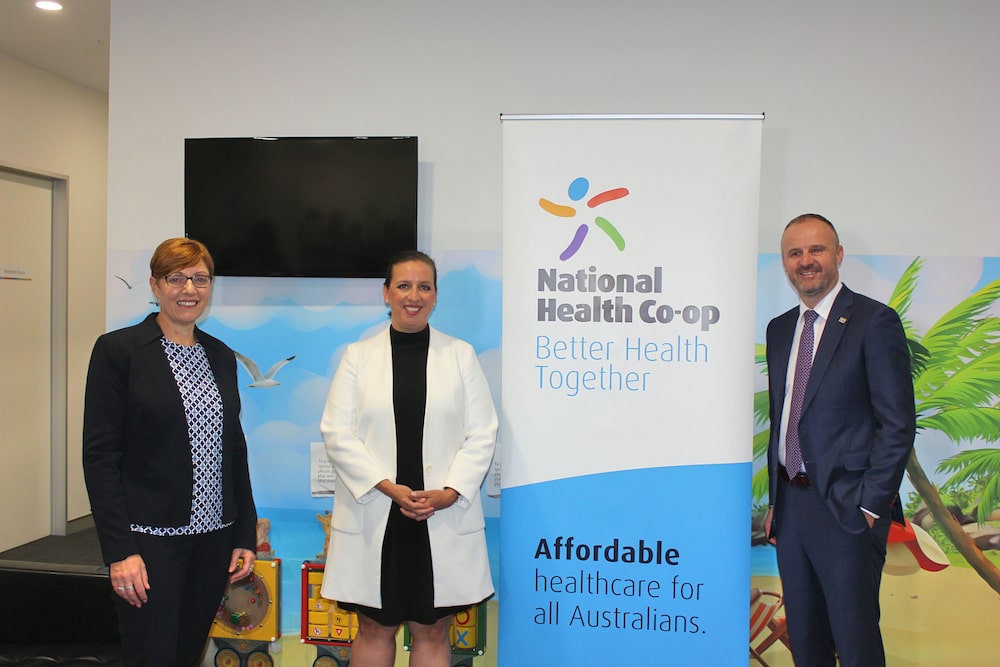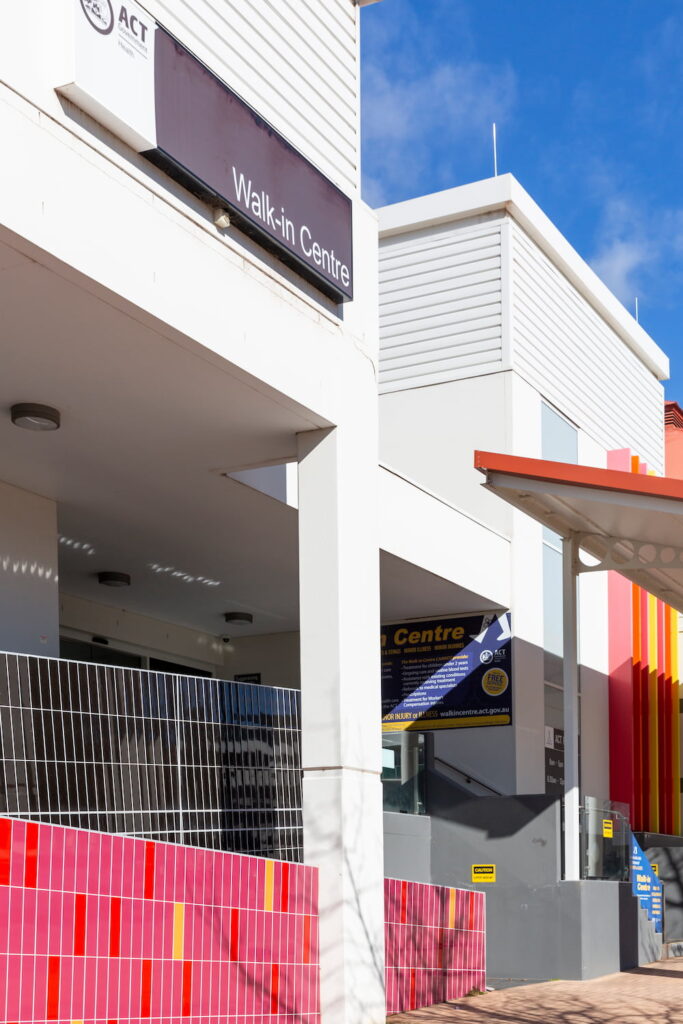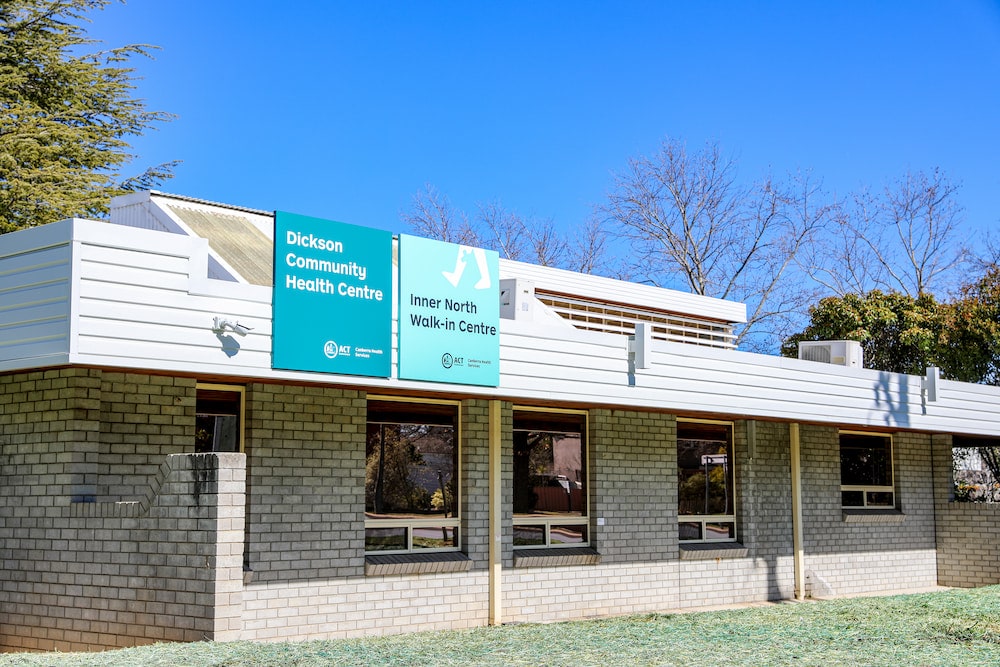Updated 29/01/21 at 2:45pm.
Details of plans to double the ACT Walk-in Health Centre network with five new facilities, to total 10 across the Territory, were announced by ACT Chief Minister Andrew Barr and Minister for Health Rachel Stephen-Smith at the National Health Co-Op in Coombs today, 28 January.
The NHC Coombs clinic will house a new nurse-led Walk-in Centre, set to open in less than six months, on 1 July. It will focus on maternal and child services for the growing population of Molonglo Valley.

National Health Co-op CEO Alison Wright was looking forward to expanding healthcare in the area.
“We’re dedicated to providing affordable healthcare in the Canberra region, and collaborating with the ACT Government and Canberra Health Services increases the contribution that we can make to the community,” she said.
The walk-in centre will use unoccupied clinical space, so NHC’s existing services will not be affected.
Another $2 million will go toward feasibility and site selection work for four new Walk-in Centres in South Tuggeranong, West Belconnen, Inner South, and North Gungahlin over the next 18 months.
Ms Stephen-Smith said these centres were expected to open in the 2022/23 financial year.
The sites for the new Walk-in Health Centres will be chosen to achieve a “good geographical spread” across the capital, taking into consideration areas of future growth.
Currently, the Walk-in network offers clinics in Belconnen, Dickson, Gungahlin, Tuggeranong, and Weston Creek.
These centres provide immediate treatment for minor injuries and illness including colds and flu, sprains and strains, skin conditions and rashes, and minor wounds and infections, Ms Stephen-Smith said.
The five new Walk-in Centres will offer a new model of care between private practice and publicly-funded ACT Health Services.
In addition to Walk-in care, these proposed new centres would also offer appointment-based services focused on preventive health services, early intervention, and integrated care for people with chronic illnesses such as diabetes, heart disease, stroke, Ms Stephen-Smith said.

Mr Barr and Ms Stephen-Smith also announced upgrades to existing sites.
The Weston Creek clinic will receive $10.9 million towards outpatient imaging services, including ultrasound X-ray and CT capability, aiming to reduce emergency wait times and make it easier for the community to access diagnostic imaging services.
The announcement comes the same day Shadow Minister for Health Giulia Jones was vocal in her criticism of the ACT Labor-Greens Government’s health management, following the Productivity Commission’s latest report that fewer than half of patients in ACT emergency departments are treated on time.
“For a government that’s been in power for 20 years, this simply isn’t good enough,” she said.
“Labor and the Greens are letting down our community, and they’re letting down our tireless, committed health workers.”
The Productivity Commission Report on Government Services found 48% of patients are treated on time, well below the national average of 74%.
Only one in three (34%) patients presenting to emergency for care triaged as ‘urgent’ are treated on time.
Ms Stephen-Smith said the report contained no new information.
“We already know that we have a lot of work to do to improve our wait times in our emergency departments, and particularly for Category 3 (urgent) patients who come in,” she said.
Canberra Hospital and Calvary Hospital were reviewing models of care within the emergency department and improving flow through the hospital.
Although most people who came to emergency departments were not admitted into hospital, some waits occurred because of bed lock in hospital.
To free up space, emergency departments could admit patients directly into wards rather than waiting for consultants from wards to approve admission.
Ms Stephen-Smith said the government was delivering more services closer to home and trying to keep people out of the emergency department unless they really needed to be there.
She said Canberrans embraced nurse-led Walk-in Centres when seeking immediate treatment for minor injuries and illnesses, and fewer semi-urgent and non-urgent cases were presenting to hospitals with broken arms and legs, and strains and sprains.
“That [has] been their primary choice in terms of getting healthcare that needed to be immediate and couldn’t wait or wasn’t appropriate for a general practitioner,” Ms Stephen-Smith said.
- Nick Fuller and Rosa Ritchie
For more:



